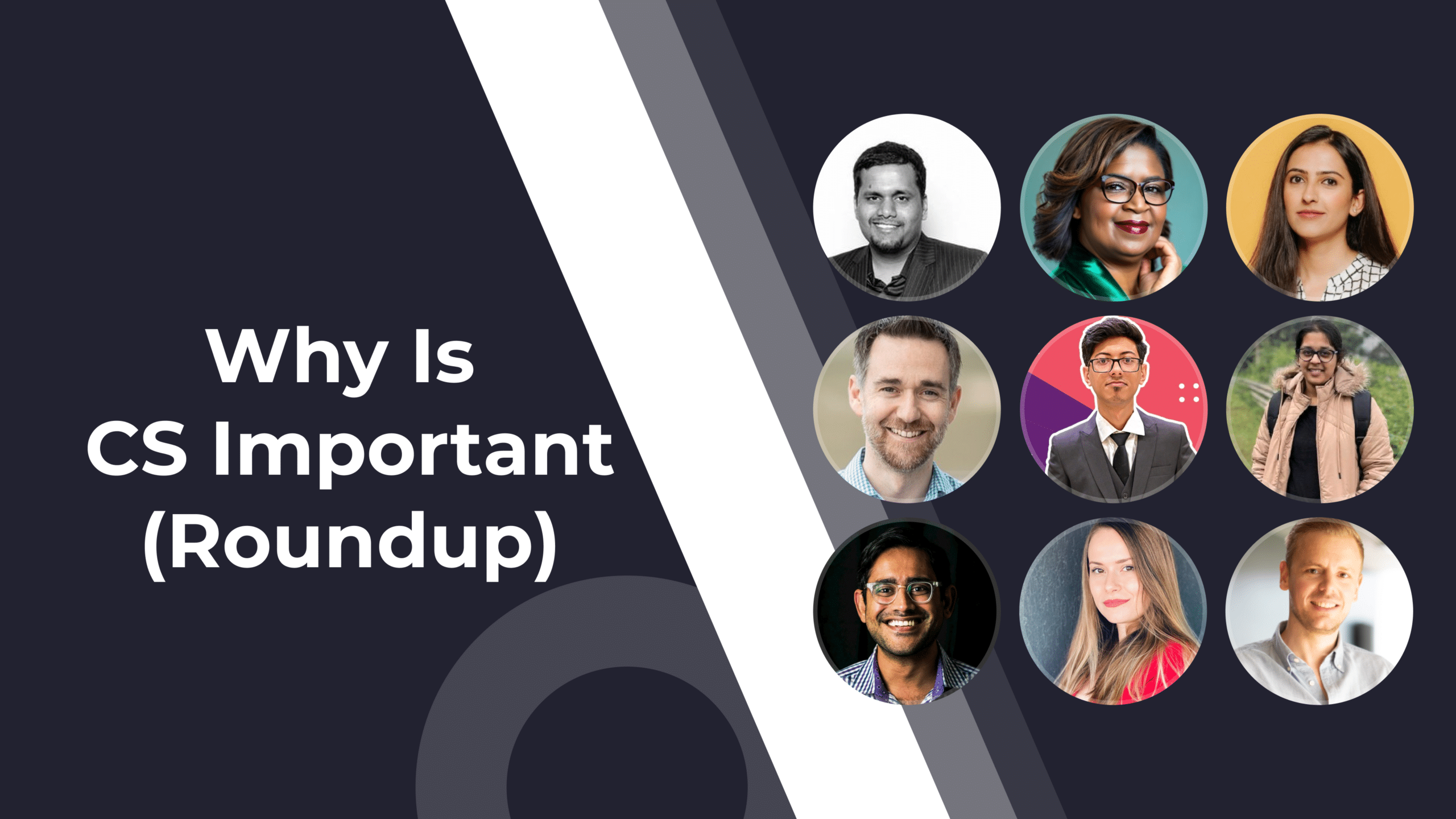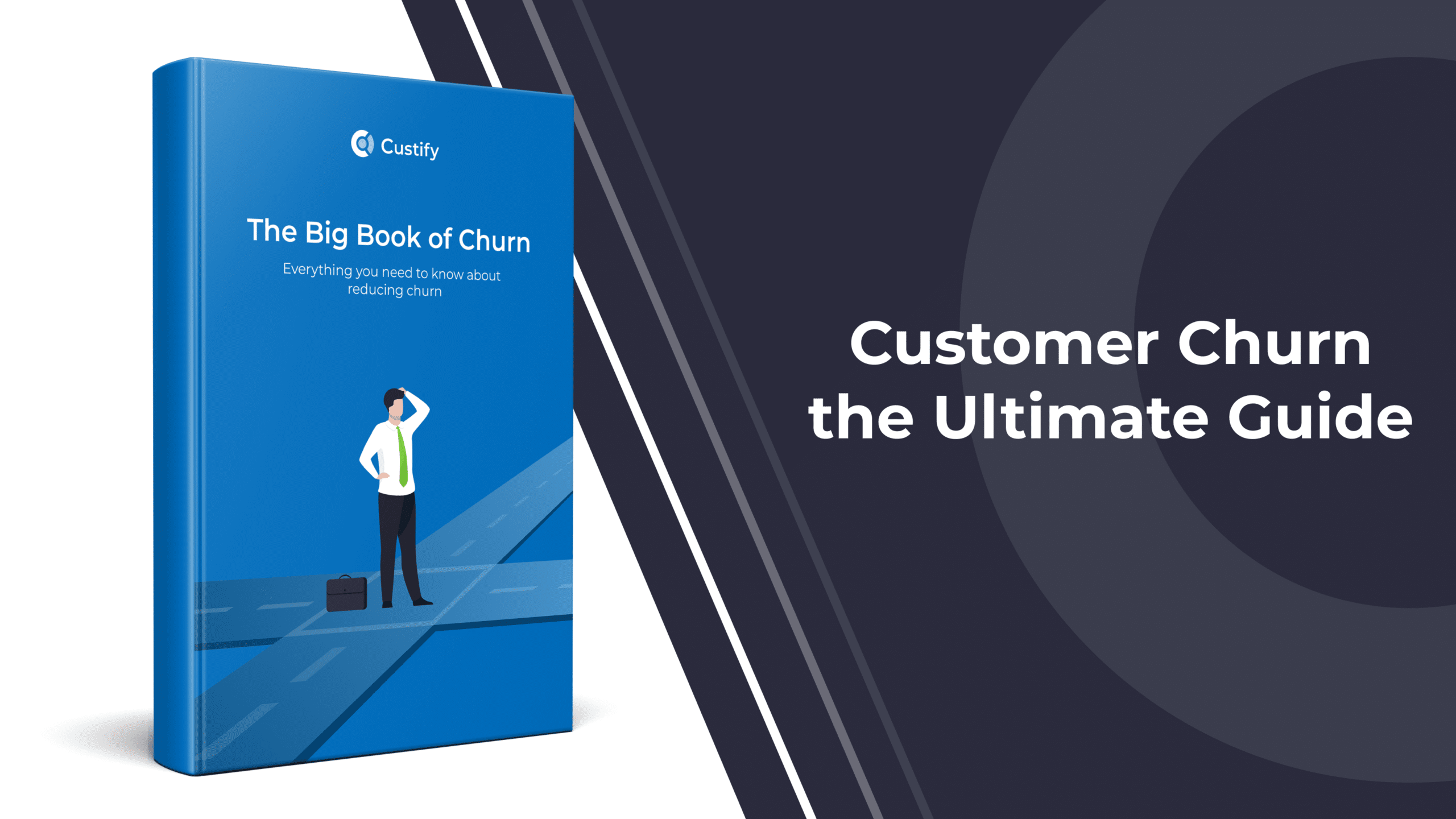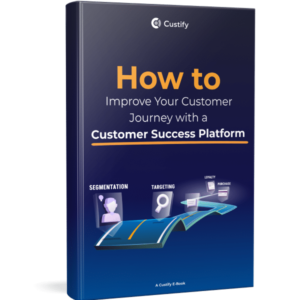Measuring the success of any business program requires an understanding of both goals and metrics. Customer success is no exception. The goals of customer success are relatively straightforward, but what about metrics? What should you measure to determine whether your customer success program is working?
There are many different factors you can look at, but a few stand out as particularly well suited to measuring customer success. Let’s take a look at five of them here.
You might already be tracking one or more of these metrics. If you are, it’ll be an easy transition to monitoring your customer success program. If not, it’s a good idea to start tracking them as soon as possible.
1. Churn Rate
Churn rate is, simply, the number of customers that unsubscribed from your service (or stopped buying your product) divided by the number of customers you started with. It’s often calculated monthly, so the formula would look like this:

Let’s say a company has 650 customers at the beginning of the month, and loses 15 by the end of that same month. 15/650 = 0.023, so the company’s monthly customer churn rate is 2.3%.
If your customers are finding success with your product or service, your churn rate will be low. If you’re not providing value, though, or your retention strategies aren’t working, your churn rate will rise.
This is one of the most important metrics for any business—it’s talked about constantly in the SaaS field, but it can be applied in any other industry as well. Churn rates are largely driven by your product or service and if it’s satisfying customers’ needs.
A strong customer success program goes a long way toward reducing churn. Customer success managers (CSMs) help customers get the maximum value of your product or service. And that’s what keeps customers happy and coming back.
It’s important to note that there are many different churn rates you could look at. The formula we discussed above is the monthly customer churn rate. You can also calculate things like revenue churn, where you look at the recurring revenue that’s lost each month.
This is a great way to take into account the value of each customer that you lose (revenue churn recognizes the difference between a client that pays you $500 per month and one that pays you $50).
So what’s an acceptable churn rate? Lincoln Murphy at Sixteen Ventures says that SaaS companies should aim for 5–7% annual customer churn, or somewhere around 0.5% monthly churn.
That’s going to differ across industries and product types, but if you can get your monthly churn down into the sub-1% range, you’re doing a great job.
2. Net Promoter Score (NPS)
NPS is a controversial measure. But as long as you don’t base all of your company’s tactics around it, it can provide insight into how much value you’re delivering to your customers.
Determining NPS is easy: just ask customers how likely they are, on a scale of 0 to 10, to recommend your company to someone they know. Those who chose 9 or 10 are called “promoters,” those who chose 7 or 8 are “passives,” and everyone else is classified as a “detractor.”

Here’s an example. Let’s say we surveyed 100 customers. 40 chose 9 or 10, 45 chose 7 or 8, and 15 chose a number between 0 and 6. That means 40% of respondents are promoters and 15% are detractors. Our example Net Promoter Score is 25.
What’s a good NPS score? Promoter.io says that anything above 0 is good, above 50 is excellent, and above 70 is world-class.
You’ll go about raising your NPS in the same way as you decrease your churn: by providing great value to your customers.
But you’ll also have to encourage promotion. Thank the people who refer others to your brand. Make it easy for people to promote your products and services. Provide phenomenal customer service. And, of course, make sure that your customers are successful by using your product or service.
How you go about measuring Net Promoter Score is also important: make sure to always ask your customers how likely they are to recommend your company at similar points in the customer lifecycle, or to segregate the answers based on when the customers were asked.
For example, if you find that people are less likely to recommend you after they’ve been in contact with your customer service reps, you know that you need to improve your customer service program. If users of one product give high NPS scores and users of another give low scores, you can focus your efforts on improving the second product.
By keeping close tabs on your NPS, you can ensure that you’re providing maximum value across your entire customer base.
3. Average Revenue Per Customer
Every company has high-value customers and low-value customers. But if the average is high, you’re doing something right.
That’s why you should always know your average revenue per customer. To determine this figure, divide your total revenue derived from customers by the total number of customers you have.

You can do this over the entire lifetime of your company, annually, monthly, or on whatever time scale you think is relevant for your business. It’s not a bad idea to calculate it over multiple time scales to see if your average revenue per customer is changing or remaining stable.
The more successful your customers are with your product or service, the more they’re going to keep coming back. And that’s what will drive up your average revenue per customer.
Upsells and cross-sells also increase this figure as well, so it will be affected by account managers and salespeople as well. Increasing it will require a strong effort from many different parts of your company, but it’s one of the most effective measures of how much your customers are worth to you.
4. Customer Growth
This is a rather difficult metric to measure and work with. But in the world of customer success, customer growth is one of the most important signs of a successful program. If your customers’ businesses are growing, you’re doing something right.
Of course, it’s difficult to determine whether your product or service is responsible for the company’s growth. That’s why your CSMs need to be in very close contact with customer representatives and—ideally—have access to detailed metrics from your customers as well.
In the end, it might be impossible to figure out if your company is directly responsible for your customers’ success.
That being said, monitoring customer growth can be useful in other ways, so it’s a good idea to collect as much accurate information as possible. Seeing how different products and services affect customer success can help you improve those offerings and make changes in your customer success program.
Like any other metric, this is a good one for tweaking your customer success offerings, so it’s important to keep a close eye on it.
5. Customer Engagement
Are your customers actually using your product or service? If not, your customer success team hasn’t shown them how to onboard, implement, and use the offering well enough to drive success.
There are a few different measurements that you can use to gauge customer engagement. A simple option is keeping track of how often they’re in touch with your customer success team. The more often they interact with your team, the better. (Don’t just use the frequency of contact with your company; frequent requests to tech support aren’t good.)
If you primarily offer SaaS solutions, you can use more specific measures, like the ratio of daily active users to monthly active users (DAU/MAU). The higher the ratio, the better—that means more people are using the service regularly, instead of irregularly. That shows that it’s providing value.

Online companies might also measure active time, visit frequency, number of actions, and other numbers.
The metrics that you use to determine customer engagement will depend largely on your industry and business model. If you don’t already have a system in place for measuring customer engagement, give your business model some thought before using a metric that you see someone else has used.
6. Trial-To-Paid Conversion
Many SaaS companies provide free trials to potential customers in an effort to show them the value they’ll get out of the software. But how many people who start trials actually end up paying for the service?
That’s what trial-to-paid conversion measures:

It’s important to not include any subscriptions you get from people who didn’t go through a free trial. If you have a significant number of subscriptions that don’t result from trials, your marketing is great—but that’s not relevant to this particular metric.
Customer success managers should be involved in getting customers to transition from trial to paid memberships, as they’re some of the best people in your company for explaining and demonstrating the value of your product or service.
If the trial-to-paid conversion is going to be used as a customer success metric, it’s important to make sure that your customer success program is focused on increasing this ratio. If your CSMs don’t get involved until later in the lifecycle, this isn’t going to reflect the efficacy of your customer success program.
Like any other metric, it’s important to take your own business into account to determine whether it’s going to be a useful measurement before putting it in place.
Focus On The Customer
In the end, measuring customer success requires a variety of metrics. Some of them are focused on your customer. Others are focused on how your customers interact with your company.
But it’s important to remember that customer success should always be focused on your customer. The ultimate goal of customer success is to increase revenue for your company, but it requires a strong emphasis on meeting your customers’ needs and goals. Don’t lose sight of that when you’re establishing and monitoring metrics.




